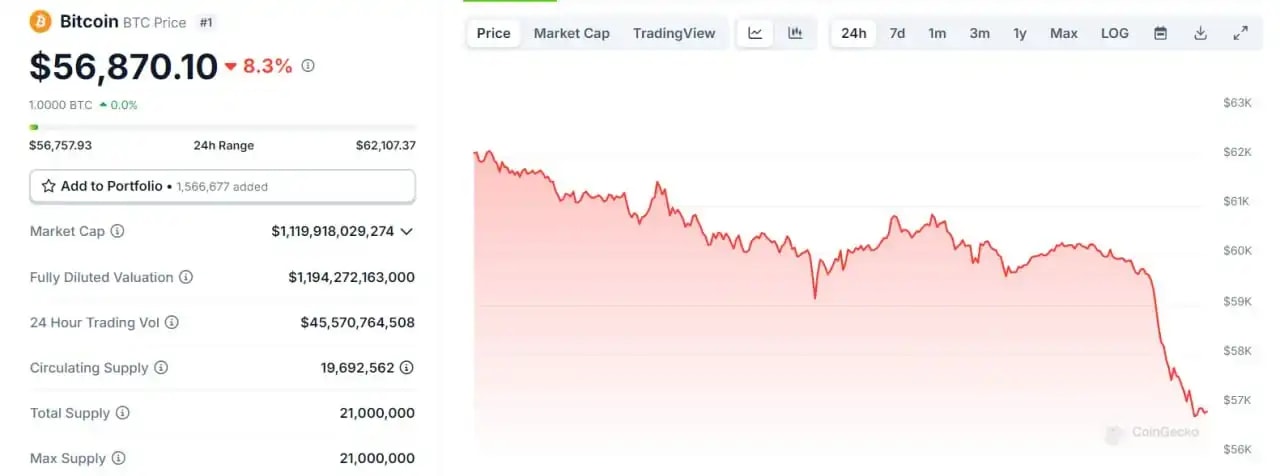s the time approached for the Federal Open Market Committee's (FOMC) key interest rate decision on May 1st, 2024, Bitcoin (BTC) came under heavy selling pressure. The top cryptocurrency fell over 9% in the 24 hours leading up to the meeting to dip below the $58,000 mark for the first time since February. This represented a sharp decline of 22% from BTC's all-time high of $73,000 set back in March.
The anticipation of further monetary policy tightening from the Fed fueled fears among traders that higher borrowing costs could slow economic growth. This tumultuous macroeconomic backdrop made riskier assets like Bitcoin less attractive. As the clock ticked down to the 2 pm policy statement, sellers ratcheted up their activity, pushing the cryptocurrency to lows not seen in over 3 months.

Volatility Reigns Ahead of Key Event
Cryptocurrency markets have historically reacted strongly to FOMC meetings, with volatile swings both before and after announcements. There was little consensus on what message the Fed would send at this meeting. Some hoped Chair Jerome Powell would hint at less aggressive rate hikes in coming months if inflation moderated. However, most expected the Fed to maintain a hawkish stance given consumer prices remained stubbornly high. This ambiguity drove cryptocurrency volatility to surge in the run-up.
The selloff was also influenced by weakness across wider digital asset markets. Bitcoin's dominance has declined as investors diversify into other cryptocurrencies. However, alternative coins also fell sharply on May 1st with the GM30 large-cap index tumbling over 8% - showing most of the sector was caught up in the risk-off sentiment sweeping traders. Stablecoins pegged to the US dollar, seen as havens, were exceptions as demand increased for these lower-risk assets.
Down but Not Out
While the Bitcoin price slump was severe, many analysts said the move was likely short-term and driven more by short-term traders rather than long-term holders. Macro headwinds could persist in dampening crypto demand until there are clear signs inflation is easing. However, Bitcoin's underlying blockchain usage continues growing, suggesting long-term fundamentals remain strong. If the Fed signals a more neutral pivot, Bitcoin could see renewed buying interest after its recent healthy correction from all-time highs. For now, the largest cryptocurrency's positioning in the mid-$50k range may offer support.











